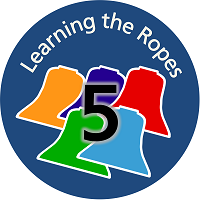Change Ringer
Benefits of using a simulator
As ringers progress through the higher Learning the Ropes Levels simulator sessions should still be used to consolidate foundation skills – bell handling, ropesight and listening.
At this stage, your ringer will be familiar with some methods and you will want to develop their repertoire. Standard methods are at their fingertips and new methods may be added. Touches may be called or pre-set touches and exercises used to develop abilities.
Analysing ringing to improve performance
Two newish retired learners had Abel on their own PC, so I would save and email their Abel files to them so they could play them back at home and study them. They were so taken with it they ordered their own dumbbell but carried on returning for my sessions for a while as well.
Exercises or unusual combinations
Exercises or unusual combinations can be rung without worrying what it might sound like outside. Your own practice exercises can be added to the simulator software's repertoire, although all the ones ART recommends are there already, such as dodging and place making in various positions and Mexican Wave. It can be used for practising more complex pieces of work such as Cambridge places. This can do done with two bells in the tower, or they can be added into the middle places of 6-bell kaleidoscope places. Alternatively the place notation can be added to the simulator with the student ringing by themselves, ringing both the 3 and 4 to simulate ringing Cambridge places both up or down.

Change Ringer
Ringing and calling a second method and ringing touches of Plain Bob. Demonstrated by ringing three quarter peals including inside to Plain Bob Minor.
» Level 5
How-to guides
Download these handy guides showing how to set up your simulator for each of the learning exercises on these LtR web pages.